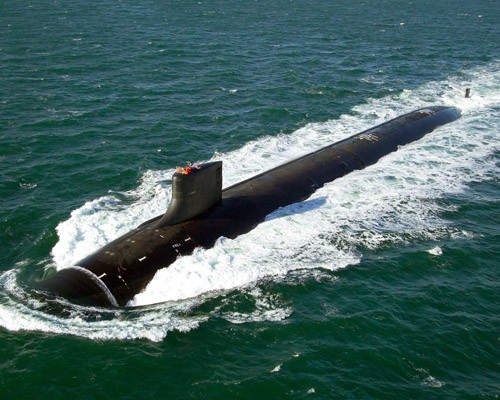In 2013, the USS Jimmy Carter sailed into Pearl Harbor for repairs just two months after leaving her home port in Washington. No one knows what the submarine was doing, but whatever it was, it earned the crew of the Carter a Presidential Unit Citation.
There really is no ship like the Jimmy Carter. It’s the third and last submarine in the Seawolf class, but while it was being built, the Navy decided to retrofit the boat with an extra 100 feet and 2,500 tons of top secret fun.

That 100 feet gives the Carter its multi-purpose capabilities. It not only carries a host of different weapons, from Tomahawk missiles to Mark-48 torpedoes to Navy SEALs, it’s also said to have a docking area for divers or remotely-operated underwater vehicles.
It’s called the Multi-Mission Platform, and the same versatility it offers the Navy is what allows us to speculate on what its possible missions could be. Drones and SEALs are just the tip and are the only capabilities of the Carter the Navy will actually admit to.
The most likely mission of the Jimmy Carter is tapping into undersea fiber optic communications lines, the way its spy submarine predecessor, the USS Parche, used to tap into old Soviet copper lines on the bottom of the ocean.
Submarine technology has come a long way since the Cold War. Most of the technology used by American submarines, whether meant for spy missions or not, will be classified. There is still much we know about the newest subs that put them heads and tails above the rest.
The Carter, for example, is outfitted with special “thrusters” to keep it stationary above a target, even in extreme currents. This kind of technology would be most useful for tapping underwater fiber optic lines or planting listening devices on the ocean floor.
What earned the Jimmy Carter a Presidential Unit Citation in 2013 isn’t entirely clear, and this is probably on purpose, given the nature of the Carter’s mission. To earn the citation, the unit has to show “extraordinary heroism in action against an armed enemy.”

First, that enemy would have to actually see the Carter, which is itself difficult to do. Spy submarines normally operate in littoral zones along the coastlines of enemy territory, which can affect the way sonar sees targets. Submarines in general try to operate in shadow zones, depths at which they can avoid being seen.
Shadow zones come at layer depth, the depth at which active sonar will either be forced upward or be directed downward, leaving a blank area where the sub can operate undetected. The mathematical formula for this depth is classified, but you get the idea. That’s where spy subs will be.
In 2017, the Jimmy Carter finally sailed back to the US and as it made its way into its home port, it was flying the Jolly Roger alongside the Stars and Stripes. It’s a British submarine tradition dating back more than 100 years, meaning it successfully completed its mission – but what missions?

There are very few publicly available stories related to the Carter’s activities, making the boat likely one of the most secret spies in the U.S. arsenal. All we know about the mission is its public name: Mission 7.


